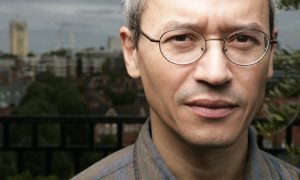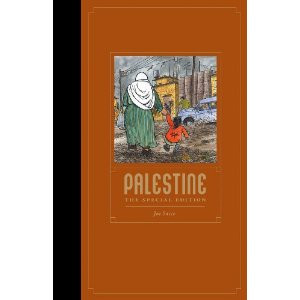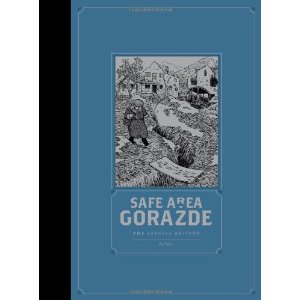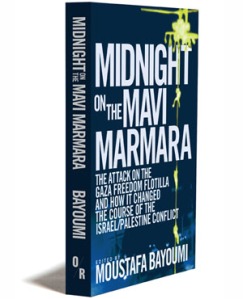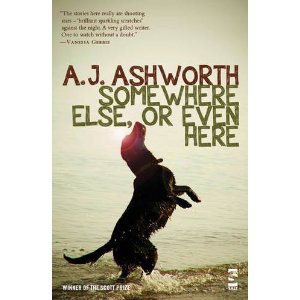 AM: I’m glad to be talking with the talented Andrea Ashworth about her Scott Prize winning collection Somewhere Else or Even Here. Andrea, tell us briefly about the collection, how do you see it, and what does it mean to you?
AM: I’m glad to be talking with the talented Andrea Ashworth about her Scott Prize winning collection Somewhere Else or Even Here. Andrea, tell us briefly about the collection, how do you see it, and what does it mean to you?
AA: Thanks, Adnan. The collection is made up of 14 stories, most of which were written during my Master’s degree in Writing at Sheffield Hallam University. The stories are quite diverse but there are certain themes which run throughout a lot of them, for instance loss and hope as well as more obvious themes such as astronomy. They’re quite dark, but there’s light in there too – the yin and yang of life. I suppose I’m happy with how the collection has turned out although I’m not sure creative people are ever fully satisfied with what they’ve produced! We’re always striving after some kind of perfect, unattainable creation. That’s what keeps us writing.
AM: I agree. You stories have a strong individual tone or style. How close are they in terms of the writing process? Do you usually finish one and then start the next or does the writing of one overlap with the writing of another? If so, how do you think it affects the finished pieces?
AA: They were all written over about three years so were produced quite close together. The writing of some of them may have overlapped – it’s hard to remember. Sometimes I’ve had an idea for a story and have written a few sentences but it didn’t feel the right time to write it, so I might have left it for a while and returned to it later. I have lots of first sentences and paragraphs on my computer – many of which will never be looked at again – but I think it’s important to at least have them written somewhere just in case. As for the effect on the finished pieces, I’m sure that similar interests and concerns will emerge especially if they’ve been written over a fairly short space of time. I was just starting to get more interested in astronomy when I began writing the stories in the collection and I can definitely see that shining through a lot of the pieces.
AM: I wonder about the theme of loss, which is connected to words and gestures and other things. Loss is also related to happiness in several stories. Can you tell us something about the ways you deal with these themes?
AA: When I was writing the stories, I wasn’t really aware of how much loss was in them. I only realized it once people started reading them and telling me what they thought of them. But themes often emerge naturally without the writer necessarily being aware of them, so loss – and the potential of finding some kind of happiness after loss – is obviously a concern of mine. It’s hard to explain how I’ve dealt with themes like that because it’s not something I’m really conscious of. I’m a very intuitive writer and I just follow what feels right. I don’t feel I can be too analytical about how I write. I just follow my nose.
AM: I work in the same way, and am always fascinated by the readers’ impressions. I love the fact that we, as writers, are not in full control of what we do, despite the aspirations to perfection. I loved the way the loss of someone in “Overnight Miracles” was both total and gradual. By total, I mean the man is dead. But then the feelings remain, and he is being retrieved, if that is the right word, from the other side. Then, slowly, he is lost again. So this is the gradual loss after the abrupt one. Can you say something about this?
AA: I suppose when you lose someone, part of you knows that they’ve gone but there’s another part, probably a larger part, that doesn’t quite believe it. It’s almost like the brain hasn’t fully made the connections it needs to in order to accept the death; so it doesn’t feel real. I think that’s what I tried to capture in that story – that initial refusal to accept the death of someone and how far you might go to try and keep that person alive, in whatever way possible. I think the feeling of gradual loss that you describe is something which happens over time, after the initial shock – when the brain begins to firm up those mental pathways and you begin to realize the person you loved has really gone, forever.
AM: Something that I particularly liked about your stories is the way they suggest at or hint at much bigger worlds than those depicted in the stories. What I mean is, like in Dega’s painting of the ballet dancers, we have a precise picture of events and emotions and at the same time, we know that is not all. Your characters are not confined to what is on the pages, but we get the sense that there is a much larger world, which we can only imagine, in relation to which they are formed. You evoke all that in the reader without telling too much. How conscious are you of something like this? Or is it more the way your writing functions in general? Or something completely different.
AA: Well, if I’ve managed to do that then I’m very happy indeed! I was going to say that when you write short stories you tend to boil down a life or situation until you’re left only with an essence – and that the essence then contains aspects of that larger life or world. But then that implies that you start with the big and reduce it to the small. That’s not really what happens… not for me anyway. I start small and stay small. I don’t really think about the larger life and take a chunk of that; I just automatically see the fragment and explore that. For me, it’s like the idea of the microcosm and the macrocosm. The microcosm or little world will always contain enough detail to hint at that bigger world. A grain of sand contains aspects of the shell or rock from which it came, as well as the beach and ocean (to paraphrase Steven Millhauser).
AM: Start small and stay small, I like that a lot. I guess when you’re not trying to squeeze in the word you somehow actually do it, or expose it, or hint at it.
Tell us about the characters of dogs. I deliberately say character, rather than say the figure of the dog, which may be a more appropriate term. I feel that there are many things you use (dog, flag, coconut), usually one in each story, which have a certain catalyst-function. Now, that is how a scholar in me would approach it at first, but I cannot do it because these elements are much more than mere functions. I see these things as character-like. Can you tell us how do you think about this?
AA: That is a difficult one. I suppose they’re not just objects that serve as a stepping stones to get the reader across the path of the story; they have a more weighty, symbolic purpose than that. In that way they’re probably more like characters as they have more qualities than purely functional ones. And yes, in some instances they are catalysts – but probably emotional catalysts rather than catalysts with regard to plot. That’s a really interesting question. Probably the kind of question that will keep me awake tonight as I try and think it over!
AM: In a few stories, I felt that words and language gave me a sense of invocation of something, you know, like magic, like enchanted phrases.
AA: That’s a fascinating observation and, even though I’ve never thought about it, I can see what you mean. I love words that echo, repeated phrases, or similar-sounding words placed close together. Repeated phrases can have magical, spell-like qualities, they’re incantatory, but rather than summoning strange entities or events I suppose I’m trying to summon a mood from the reader. So, at the start of the story ‘Bone Fire’, which is about a troubled teenager who builds a bonfire in the basement of his school, I use the words ‘Bonfire. Bone and fire. Bone fire’ alongside each other – not for any reason other than that I liked the rhythm created. And it set the right tone for the rest of the story.
AM: I was intrigued by the story “Tattoo” which begins with a comment on the death of the universe, almost as if it something imminent even though it will take billions of years. Then we have the woman with a tattoo that is connected to her relationship. Tell us about death-universe-love, all of which you juggle with in this story.
AA: I love astronomy so I love to use ideas and metaphors related to it if I can. ‘Tattoo’ is the story of a woman who meets someone during a meteor shower and goes on to have a relationship with this person. Rather than just write a straight ‘break up’ story though, I wanted to bring in bigger ideas from astronomy. So, as the story is about the death of love, I wanted to also place that alongside ideas about the death of the universe – the story then creates a link between the macrocosm of the universe and the microcosm of the woman’s life. What I also wanted to explore is that, even when you’re in what you think is the darkest place in your life, there is always hope – so, even if something dies (love or a star or even a universe) there is the hope of rebirth (new love or a new star created from the elements of the dead one).
AM: Thank you for talking with me about your book.
AA: Thanks, Adnan. I really enjoyed it.
Somewhere Else or Even Here can be ordered from Salt Publishing or Amazon.
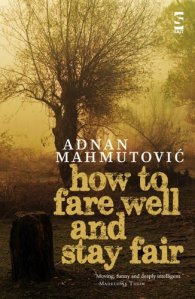 1 Where did the idea come from for the book?
1 Where did the idea come from for the book?
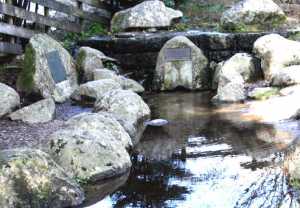 Following the cue of Paul J. Krutzen, Dipesh Chakrabarty has argued that human beings can no longer think of themselves as mere national subjects and modern individuals, but they have to understand themselves as geological force. A force is essentially non-human. A volcanic eruption has no ontology, no subjectivity, no sense of duty and rights. As a force, it is, in principle, equal to for instance a hurricane, regardless of the sheer strength of it. We have all trebled at the sight of the tsunami that hit Japan. The question is how can we understand ourselves as a sort of a tsunami and remain human and political creatures? Can the understanding of human beings as national subjects, along the belief that nature is his object, work with this new demand to de-ontologize ourselves and start thinking about ourselves as being two things? What if any of the Presidential candidates endorsed such a view and urged us all to try and rethink who we are as humans?
Following the cue of Paul J. Krutzen, Dipesh Chakrabarty has argued that human beings can no longer think of themselves as mere national subjects and modern individuals, but they have to understand themselves as geological force. A force is essentially non-human. A volcanic eruption has no ontology, no subjectivity, no sense of duty and rights. As a force, it is, in principle, equal to for instance a hurricane, regardless of the sheer strength of it. We have all trebled at the sight of the tsunami that hit Japan. The question is how can we understand ourselves as a sort of a tsunami and remain human and political creatures? Can the understanding of human beings as national subjects, along the belief that nature is his object, work with this new demand to de-ontologize ourselves and start thinking about ourselves as being two things? What if any of the Presidential candidates endorsed such a view and urged us all to try and rethink who we are as humans? It is hard to offer an ethics or political agenda that properly responds to this scientific demand that we rethink ourselves. What would such a new understanding of what we are as humans do to us in election times? How would we, thinking of ourselves as a geophysical force, choose our political representatives? And most importantly, how would this make them relate to us? It would be interesting to see a successful political narrative that incorporates this scientific thinking and demand without sounding like something taken from science fiction. The question is also can the globe itself speak?
It is hard to offer an ethics or political agenda that properly responds to this scientific demand that we rethink ourselves. What would such a new understanding of what we are as humans do to us in election times? How would we, thinking of ourselves as a geophysical force, choose our political representatives? And most importantly, how would this make them relate to us? It would be interesting to see a successful political narrative that incorporates this scientific thinking and demand without sounding like something taken from science fiction. The question is also can the globe itself speak?
